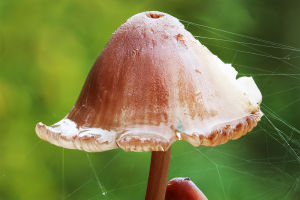The phoenix is a legendary species, and although it does not exist in real life, there is a belief that its prototype is the golden pheasant.
The male and female golden pheasant is very easy to distinguish, and when this animal is said to resemble a phoenix, it refers specifically to the male individual, whose body length is between 60 and 110 cm.
The golden pheasant has a combination of red, orange, yellow, green, blue, and purple feathers, and looks very beautiful. But the females are much different, mostly monotonous brown or brownish-yellow.
The behavior of the golden pheasant is similar to that of other pheasants, and the males' feathers are so brightly colored because they need to rely on such bright body color to win the attention of females in their species.
When the male golden pheasant is courting, its gorgeous feathers are fluffed outward and its colorful shawl feathers cover their heads, much like a shaking fan, making them more attractive for attention.
The golden pheasant is an endemic bird species in China, mainly in the Qinling region of Gansu and southern Shanxi, inhabiting broad-leaved forests, mixed coniferous forests, and open scrubland at the forest edge at an altitude of 500-2500 meters.
It often forages in the forest while walking, and also goes to the forest edge and cultivated land.
It mainly feeds on the leaves, buds, flowers, fruits, and seeds of plants, and also eats crops such as wheat, soybeans, corn, and string beans.
It also eats beetles, worms, Diptera and lepidopteran insects, and other animal foods.
Golden pheasants are generally active in groups, especially in autumn and winter, sometimes in clusters of up to 30 or more, and can also be seen alone or in pairs in spring and summer.
Golden pheasants are very alert and timid, fearful of people. Hearing and vision are keen, and a little movement will immediately flee.
When the danger is still far away, they are generally on the ground to run quickly to escape, when the danger is imminent, they generally quickly fly up to the tree to hide.
Good at running, on the way to encounter low rocks or a small piece of open space, it will spread its wings and glide through. Flying speed and dexterity, flying freely in the forest.
When going up the trees, they mostly jump from the low branches step by step, hovering and up, or jump from the neighboring small trees and then up.
They are mostly active on the ground during the day, especially in the morning and afternoon, resting at noon in hidden places, and perched on trees such as pine and oak trees in the evening against gullies and hanging rocks.


